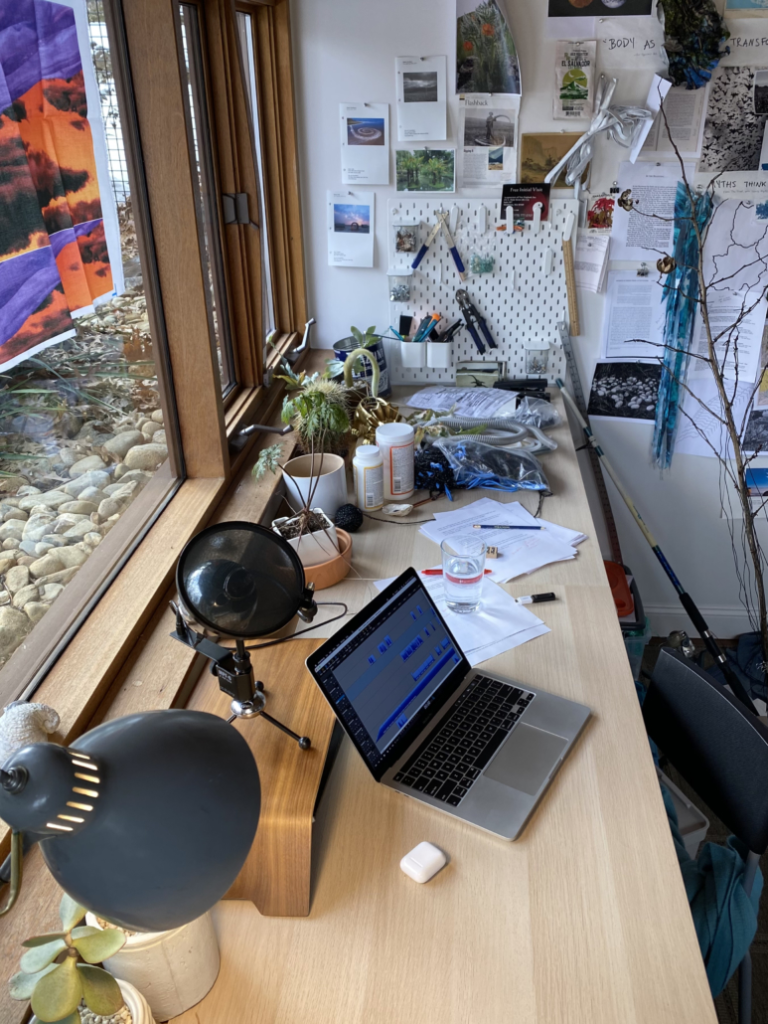Tell us about yourself and your practice.
images of work



In a nutshell, my practice is about bearing witness to the natural world and my place in it. Until recently, my focus has been sculpture (especially fiber) and photography, but social practice is taking more of my time now. All my work is informed by an undergrad degree in journalism, and experience working in horticulture. The Boston area has been home for about 20 years, but I grew up in the rural American South.
How has your creative practice shifted and adapted during the pandemic?

Solitude has always been really important for me, and my studio is at home, but with the pandemic, my partner is working from home too. That’s meant I’ve had to make more of an effort to carve out that time alone. I also signed up for a gamified organization tool called Habitica to stay on task, and that has been huge. I was sort-of organized before the pandemic, but now I think I actually am.
How has the content of or approach to your work shifted because of current events?
I think 2020 really made me into a social practice artist. I’ve always come at my work like a reporter, but it took years to figure out not just how journalism could be art, but how it could be my practice. Something about the urgency of 2020, plus the forced slowdown, finally connected those dots for me. The funny thing is, there are a bunch of artists whose work was really different from mine, but that I’d always admired, and now I realize those artists’ work is essentially journalism.
Do you have plans to transform your work or approach in 2021?
As of last fall, I’m mostly working on this new social practice project I’m distributing free as a podcast. It’s a series called Artists Looking At Animals (episodes available below), recording creative people’s thoughts on the natural world in this moment, and I’m making a new work of sound art for each piece too. It’s a radical shift back to a past life for me, but with a new purpose—I worked in audio years ago, and wanted to pick that up again, as well as make more activist environmental work, so this feels right. I’m hoping this body of work can eventually grow into a curatorial platform too.